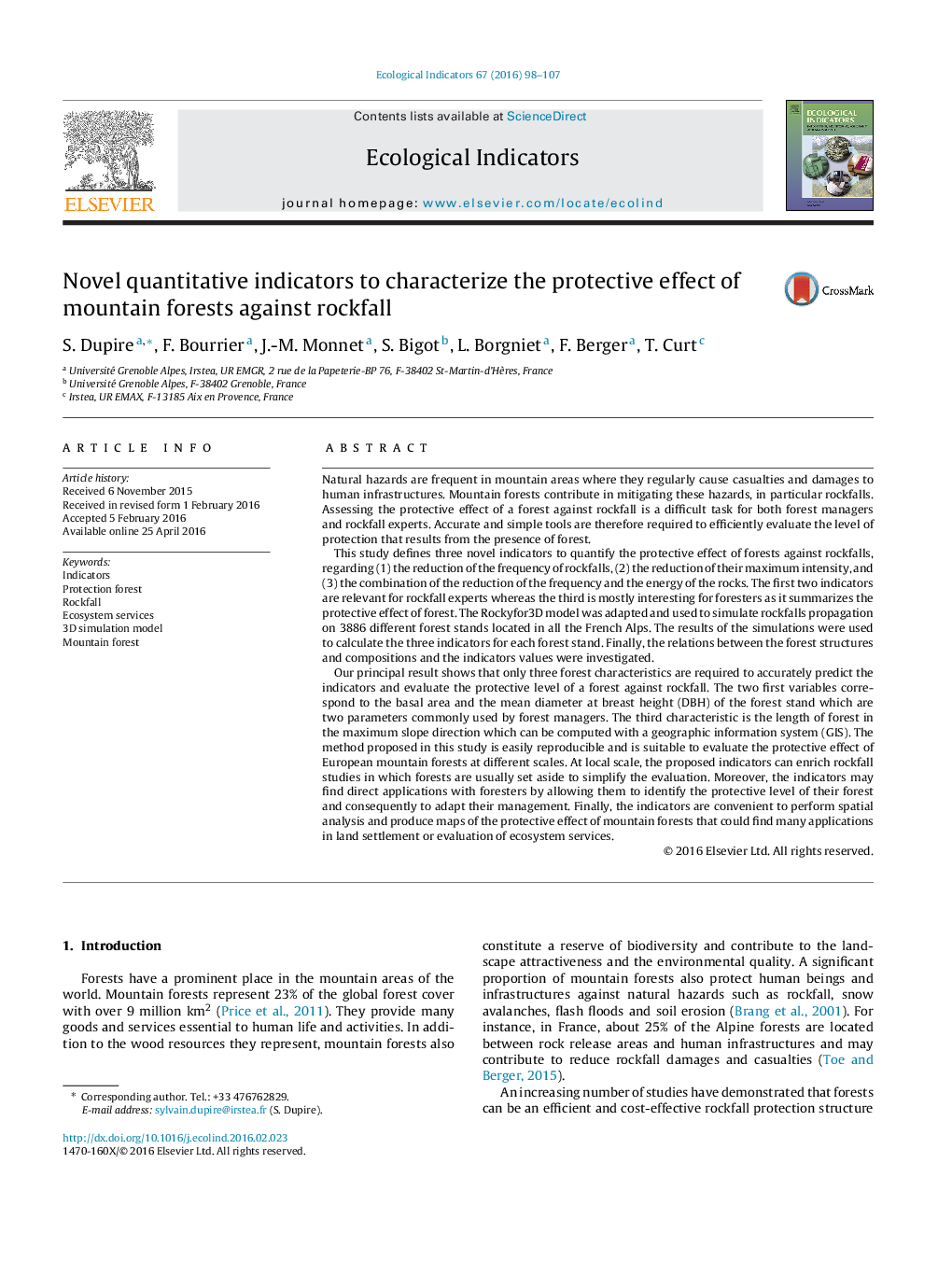| کد مقاله | کد نشریه | سال انتشار | مقاله انگلیسی | نسخه تمام متن |
|---|---|---|---|---|
| 4372858 | 1617135 | 2016 | 10 صفحه PDF | دانلود رایگان |
• We modelled rockfall events on 3886 different forests located in all the French Alps.
• We proposed two indicators to assess reductions of rockfall frequency and intensity.
• We defined one indicator to evaluate the overall rockfall protection of each forest.
• The indicators are easily and accurately predicted with three forest characteristics.
• This approach has direct applications in forest management and rockfall assessment.
Natural hazards are frequent in mountain areas where they regularly cause casualties and damages to human infrastructures. Mountain forests contribute in mitigating these hazards, in particular rockfalls. Assessing the protective effect of a forest against rockfall is a difficult task for both forest managers and rockfall experts. Accurate and simple tools are therefore required to efficiently evaluate the level of protection that results from the presence of forest.This study defines three novel indicators to quantify the protective effect of forests against rockfalls, regarding (1) the reduction of the frequency of rockfalls, (2) the reduction of their maximum intensity, and (3) the combination of the reduction of the frequency and the energy of the rocks. The first two indicators are relevant for rockfall experts whereas the third is mostly interesting for foresters as it summarizes the protective effect of forest. The Rockyfor3D model was adapted and used to simulate rockfalls propagation on 3886 different forest stands located in all the French Alps. The results of the simulations were used to calculate the three indicators for each forest stand. Finally, the relations between the forest structures and compositions and the indicators values were investigated.Our principal result shows that only three forest characteristics are required to accurately predict the indicators and evaluate the protective level of a forest against rockfall. The two first variables correspond to the basal area and the mean diameter at breast height (DBH) of the forest stand which are two parameters commonly used by forest managers. The third characteristic is the length of forest in the maximum slope direction which can be computed with a geographic information system (GIS). The method proposed in this study is easily reproducible and is suitable to evaluate the protective effect of European mountain forests at different scales. At local scale, the proposed indicators can enrich rockfall studies in which forests are usually set aside to simplify the evaluation. Moreover, the indicators may find direct applications with foresters by allowing them to identify the protective level of their forest and consequently to adapt their management. Finally, the indicators are convenient to perform spatial analysis and produce maps of the protective effect of mountain forests that could find many applications in land settlement or evaluation of ecosystem services.
Figure optionsDownload as PowerPoint slide
Journal: Ecological Indicators - Volume 67, August 2016, Pages 98–107
